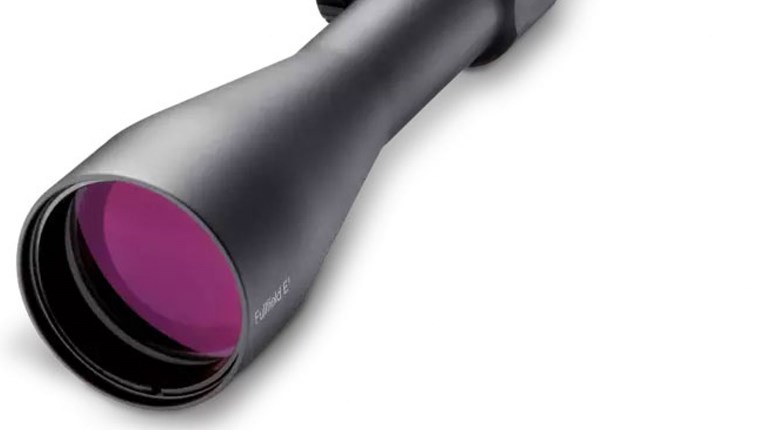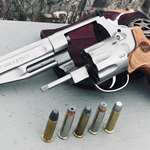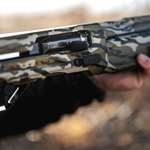
Have you heard that old joke where someone asks a heavily armed granny what she’s so afraid of, and she answers “Not a dang thing”? While it might make you chuckle, it’s a little unrealistic. Carrying concealed doesn’t remove all fear—if it does, you might have fallen for the gun-as-talisman fallacy. The truth is that for all the talk you sometimes hear about overcoming your fear and not living in fear, we’ve gotten the wrong idea about what fear is. Fear isn’t a bad thing, and it’s not something we should be trying to get rid of. Fear, when properly managed, keeps you safe. Fear is designed to help you notice a dangerous situation and avoid it (flight) or survive it (fight). Both of those are good outcomes.
What we do want to get rid of are panic and paranoia (freeze). No one wants to live on the edge, constantly worried about what-ifs and what-can-go-wrongs. The difference between paranoia and normal, healthy fear is twofold:
Paranoia comes from your imagination; fear comes from actual physical clues—something you see, hear, smell or otherwise sense in your environment.
Paranoia causes you to panic and shut down or lose control; fear helps you do something to improve your situation.
You can and should work on living in condition yellow, but in addition to that, there are two big steps you can take to harness the power of your fear without letting it turn into panic: Education and planning.
Educate Yourself About Threats
I’m not exaggerating when I say Gavin de Becker’s “The Gift of Fear” changed my personality and my life. It is an excellent education on dangerous situations and what we’re afraid of versus what we should actually be afraid of. (Disclaimer: There are some anti-gun undertones running through the book that you should definitely ignore.) Doing some reading and research on the types of threats you are statistically most likely to face will help alleviate a lot of false fears and help you focus on ways to reduce your exposure to real threats.
As a simple example, think of how many people are terrified to fly in an airplane but think nothing of driving their car at 75 mph on the interstate every day. Statistically, their car is a much more dangerous place than the airplane. Their fear or concern is misplaced because they either aren’t educated about the statistics or their mind is miscategorizing the fear.
As a more practical example most women will recognize: You’re riding in an elevator in an empty parking garage at night, when the elevator stops at another floor and a man you don’t know gets on. Are you suddenly afraid? Why? He’s not following you; he didn’t even know you’d be on the elevator. Unless there are some other context clues to indicate he’s a predator, it’s extremely, overwhelmingly likely that he’s just a guy headed to his car. This is paranoia or misplaced fear. On the other hand, say you get off the elevator and a man you don’t know is lingering by the elevator doors. He doesn’t get on the elevator when you get off but continues to linger or follow you. Now you’re afraid—and this is genuine fear, because the man is displaying abnormal or aggressive behavior. If you didn’t feel fear in this situation, you’d be foolishly endangering yourself by refusing to recognize a threat. This kind of fear is good.
The point is, if you walk around paranoid about every man in every elevator, you’ll make yourself nuts. Educate yourself about real versus perceived threats and you’ll begin to learn when it’s ok to not be afraid.
Planning
Having a plan for how you’re going to handle a scary situation is a big step to controlling fear. Without a plan, you’re much more likely to panic and freeze or do something that increases the danger.
Certainly we can’t plan for every possible scenario, but carrying concealed is one major tool in our planning. When women say carrying a firearm makes them feel empowered, this is what they really mean: It gives them an option or a plan to take care of themselves if they’re faced with a threat. Less-than-lethal self-defense options are a great plan, too, because not every threat requires a gun.
Physical tools aren’t your only planning option, though. Mentally, you can do a lot to prepare yourself to respond to genuine fear appropriately. Sitting with your back to a wall so you can see the entrance of the room you’re in helps you plan. Asking yourself, “What’s my quickest and second quickest way out of here?” everywhere you go is another great planning tool. Thinking like a criminal will help you notice danger zones so you can plan to avoid them.
You don’t need to live your live paranoid about all the things that might go wrong, but you also don’t need to become “fearless” and pretend that threats aren’t real. You can harness your healthy fear to help keep you safe by educating yourself on real vs. imagined threats and by having a tool and a plan for escaping or dealing with danger.














































